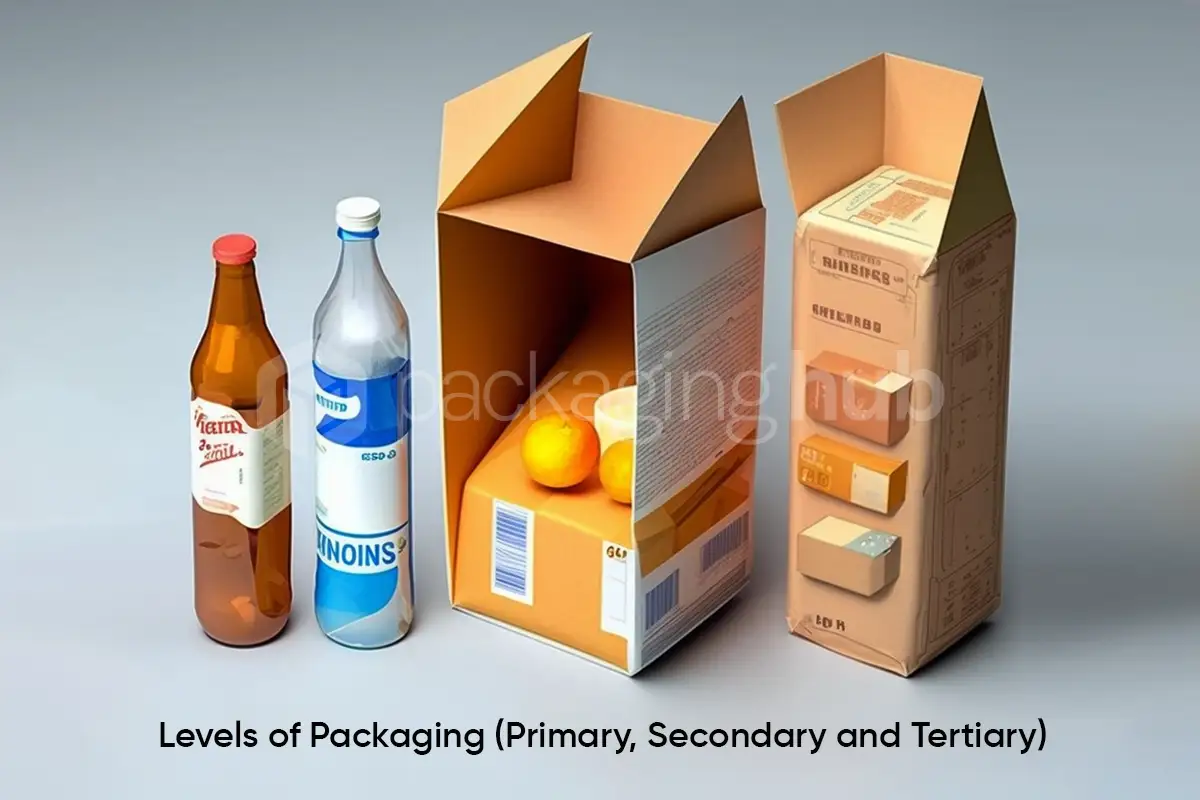Home » Blog » What Are the Levels of Packaging – Features & Differences

Last Updated on February 25, 2025 by
Packaging has a million ways to improve your product and the sales you have been getting. So, what are the basic types of it, or what levels are there in a good one? The thing is, you can learn your field without being nerdy. Knowing about these levels can help improve your knowledge and your products.
Table of Contents
ToggleIn this section, we will explore different levels of packaging that the product must have.
Apart from the primary and secondary packaging, we also have a third level called tertiary packaging.
So, below, we will discuss the primary, secondary, and tertiary packaging levels. At the same time, you can learn about their features, why they matter, and the top materials for them. So, let it be a knowledgeable journey.
If we give a primary packaging definition, the part of a package that comes directly into contact with the product is the primary level. This part offers multiple benefits for your product, including protecting it, carrying it, and providing information. It may be made of shrink film, aluminum, glass, or others.
An example of such a level is the Milo pouch packed inside a box.
Every type of pack carries some features, some to protect and some to impress. So, what features does the primary one offer? Well, here are some:
Some examples can be easy to give, and understanding them can help you know them well. So here are some of them:
Everything needs optimization, and technology plays a crucial role you need to know. So, here are some things you can do to bring the best optimization to the table:
You should be clear about how you can optimize with the use of data, for instance:
The secondary is your second line when you pack your product. So, if you are packing a good, the second part you use for it will be this. For instance, you have a microphone pack; the secondary will be the box it comes in.
Now, you can get multiple benefits from this part, which we will discuss in detail.
Features make things what they are and how they function. So, you should know what this part can offer to ensure you get the most out of it.
Here are some:
The secondary part of your packing also plays a supreme and crucial role in your goods. So, here are some examples of what these packs are normally:
Some common materials work as perfect ones for this packing type:
You know the materials you must use to secure your products against damage.
Optimizing the second level of your packing can help you save costs. Making sure it works is a crucial part of keeping in mind, so you can try to:
The tertiary level is a common type that helps improve your product protection and other factors. The main feature of this type is it would help during long-distance deliveries and transit trade. So, it is important if you are a company model with business-to-business sales that are transported far.
Another feature it offers is storing goods efficiently. However, you can also make it more effective by allowing specific methods. For example, you can try adding the proper protection by choosing the material you make. Also, using the right strength can improve its storage efficacy and how your products are transported.
At the same time, eco-friendly solutions can improve how well people respond to your packing. At the same time, you can reduce costs and design packaging in a way that allows you to transport with less weight.
Your features tell how the product will be dealt with and the effectiveness of your operations. So, here are some things your tertiary packages offer to your product and your business:
Here are some examples of what this type looks like:
You can optimize things when you are right by testing things in the materials section. Also, you can find out how the products go with the distribution. Newer and more sustainable materials can also help you optimize them for the environment.
This way, you also improve your sales by creating a better image for your brand and company. At the same time, you can cut down the total amount of waste its production creates. Moreover, you can use technologies like simulation to discover the common issues of such packing during transit to the destination.
Also, you can try methods that ensure you do not have to worry about the protection part. For example, making sections like foam inserts can allow better protection and damage control. Also, metal screws and other tools can help control heavier products from moving during transit. This way, you can save them from damage.
Also, optimizing for saving against tampering and water factor is important.
Now you know the basic terms of primary, secondary, and tertiary packing with all the context you could use for a client meeting. These three levels can improve your sales and overall industry knowledge. Packaging Hub is a solution provider for companies looking to reach their goals. So, you can hire our winning team to perfect the packaging results you need.
The more time and money you invest, the better your brand will look with impressive packing solutions.

Order your stylish and durable custom boxes and packaging from a team of industry experts.